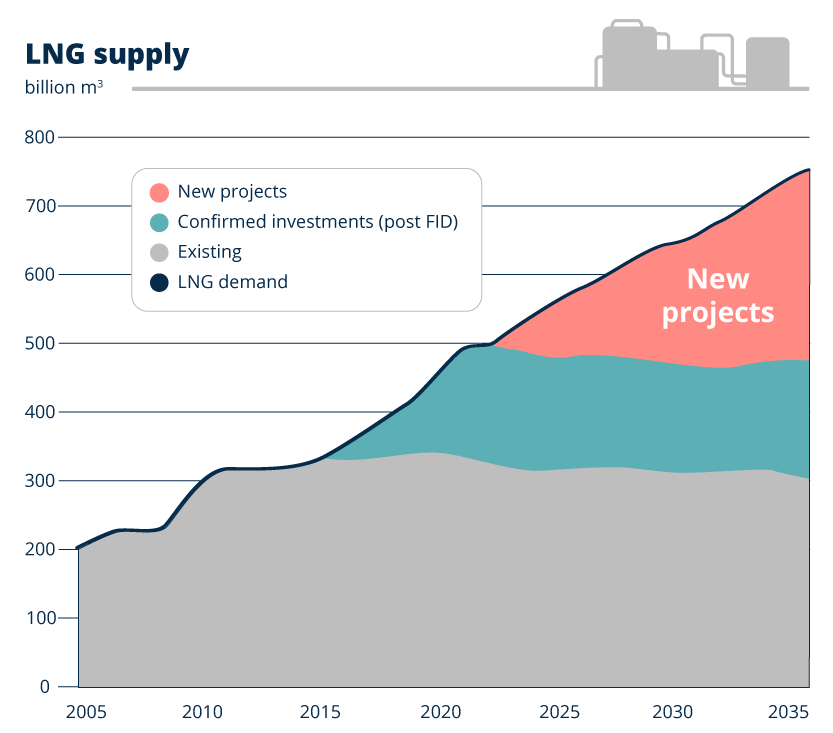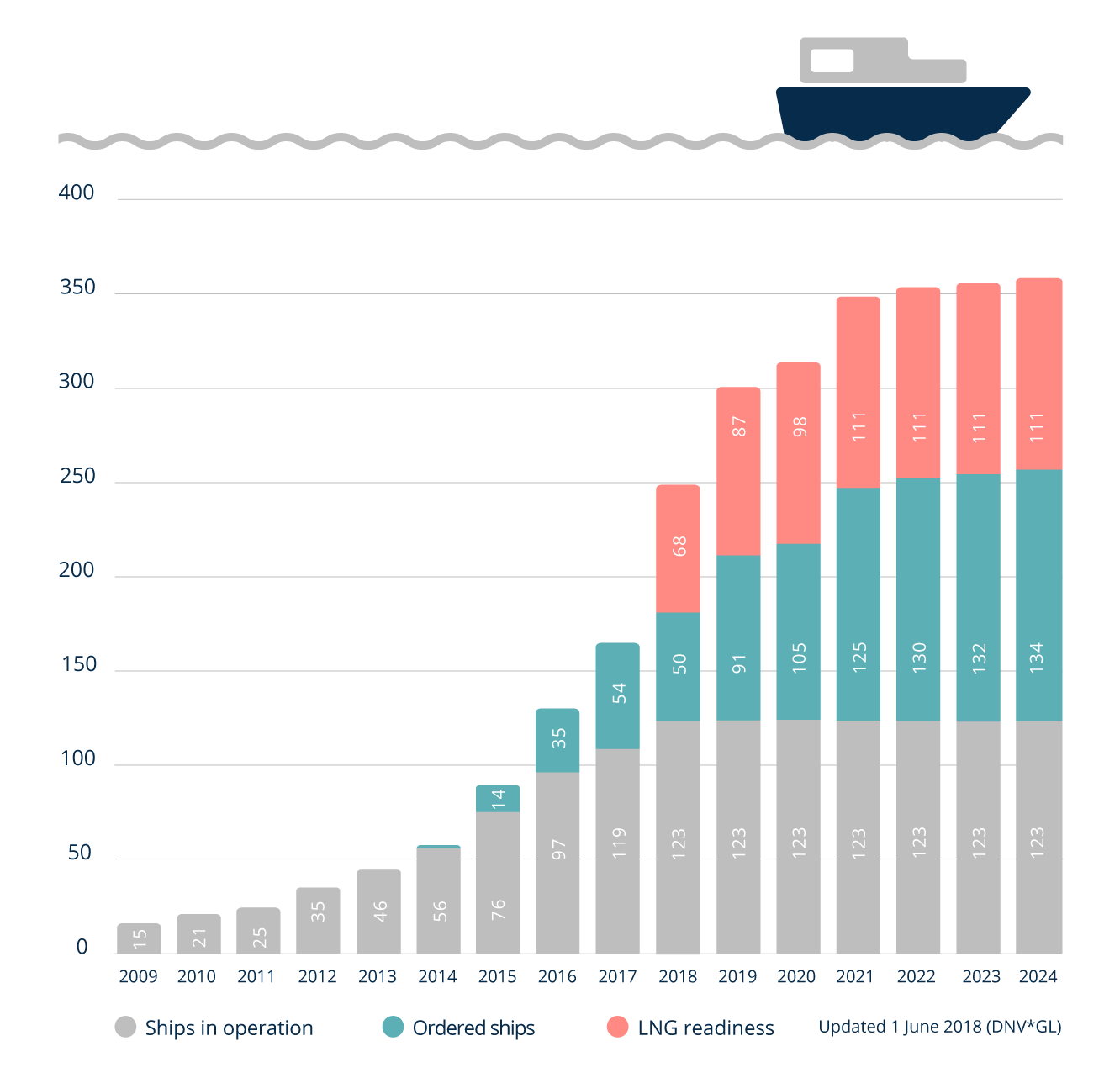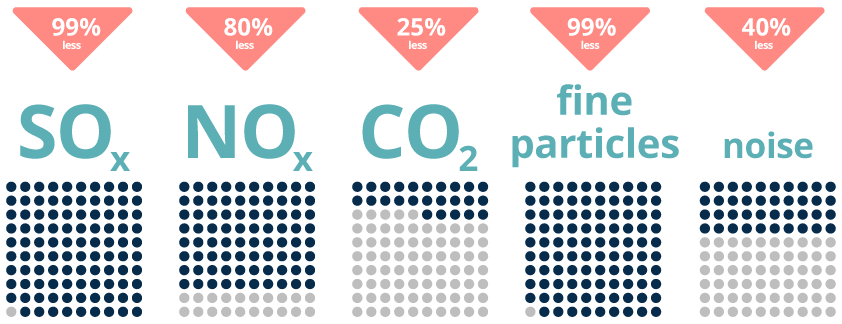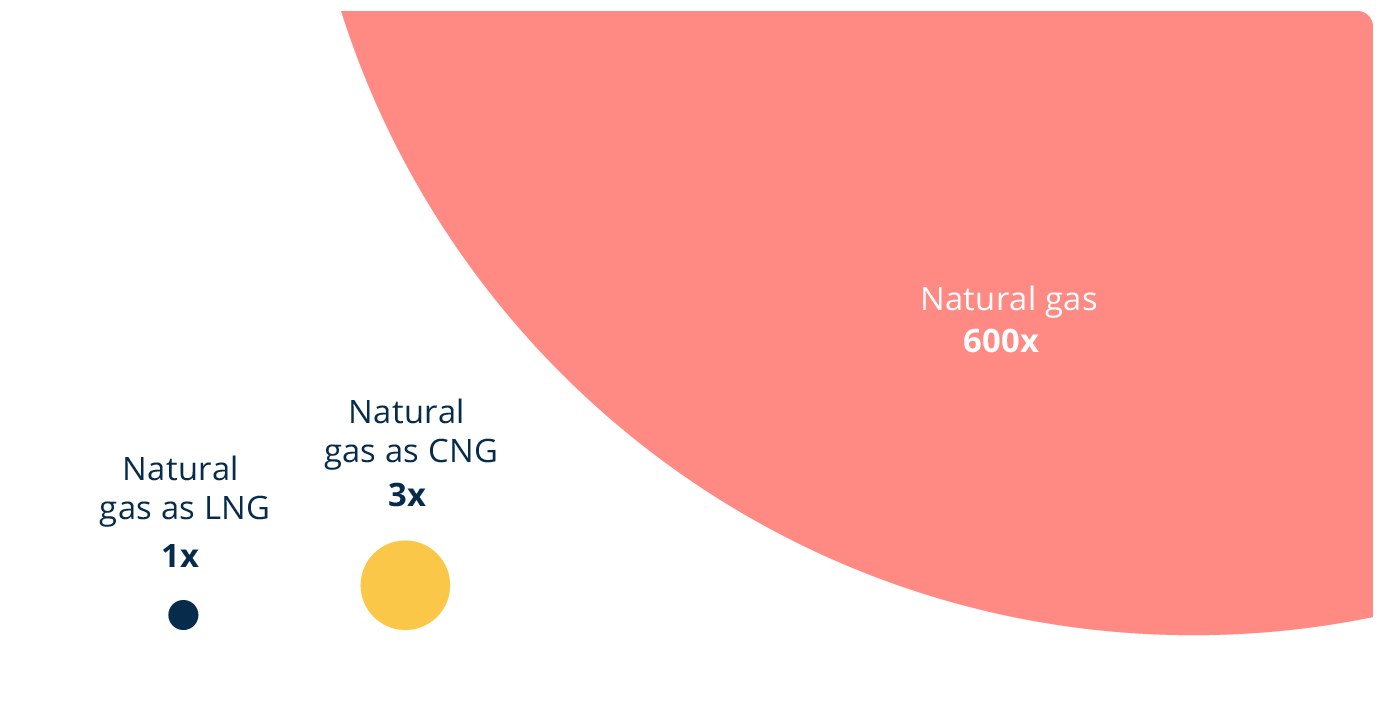LNG is a clean and affordable marine fuel
Since 2015, the sulfur content in marine fuel used on the Baltic Sea must not exceed 0.10 %. To meet the requirement, ship operators have three options: start using low sulfur fuel, install scrubbers or switch to LNG (liquefied natural gas).
LNG provides an efficient combination of ecological and economic benefits, thus allowing both to save on fuel costs, as well as to meet environment protection requirements.
LNG is the cleanest marine fuel, the use of which is growing rapidly throughout the world. Using LNG also reduces noise and vibration on board.
The European Union has also adopted a plan of action for the development of a LNG bunkering network by 2025.
The number of LNG ships is growing
- The size of the fleet using LNG is growing worldwide. Estimations of growth pace vary, but there is a broad consensus on the overall upward trend.
- LNG suits all types of vessels, both, ferries and passenger ships, as well as tankers, container ships and other cargo ships.
Meeting environmental requirements
LNG helps to reduce both global carbon dioxide emissions, as well as local air pollution. The transition to LNG completely eliminates sulphur oxides’ and fine particles’ and substantially reduces nitrogen oxides’ emissions. CO2 emissions will also be significantly reduced.
The use of LNG as marine fuel ensures compliance with the requirements for emissions set by the International Maritime Organization and the European Union.
What is LNG?
LNG, or liquefied natural gas, is produced by cooling ordinary natural gas to about -160 degrees centigrade.
Once liquefied natural gas needs only 1/600 the storage space it does in its gaseous state. Liquefaction of natural gas makes transportation and storage easy and economical. That means it’s possible to supply the areas and properties that are not served by gas pipelines.
Liquefied natural gas is transported by ship, rail or road in cryogenic tanks. At the destination it is re-gasified. The obtained gas is even cleaner than conventional natural gas because prior to liquefaction process, water, CO2, H2S and hydrocarbons are removed.
When using LNG for heating or in production, the storage and re-gasification costs must be taken into account. Therefore it fits better for energy solutions for bigger properties.



